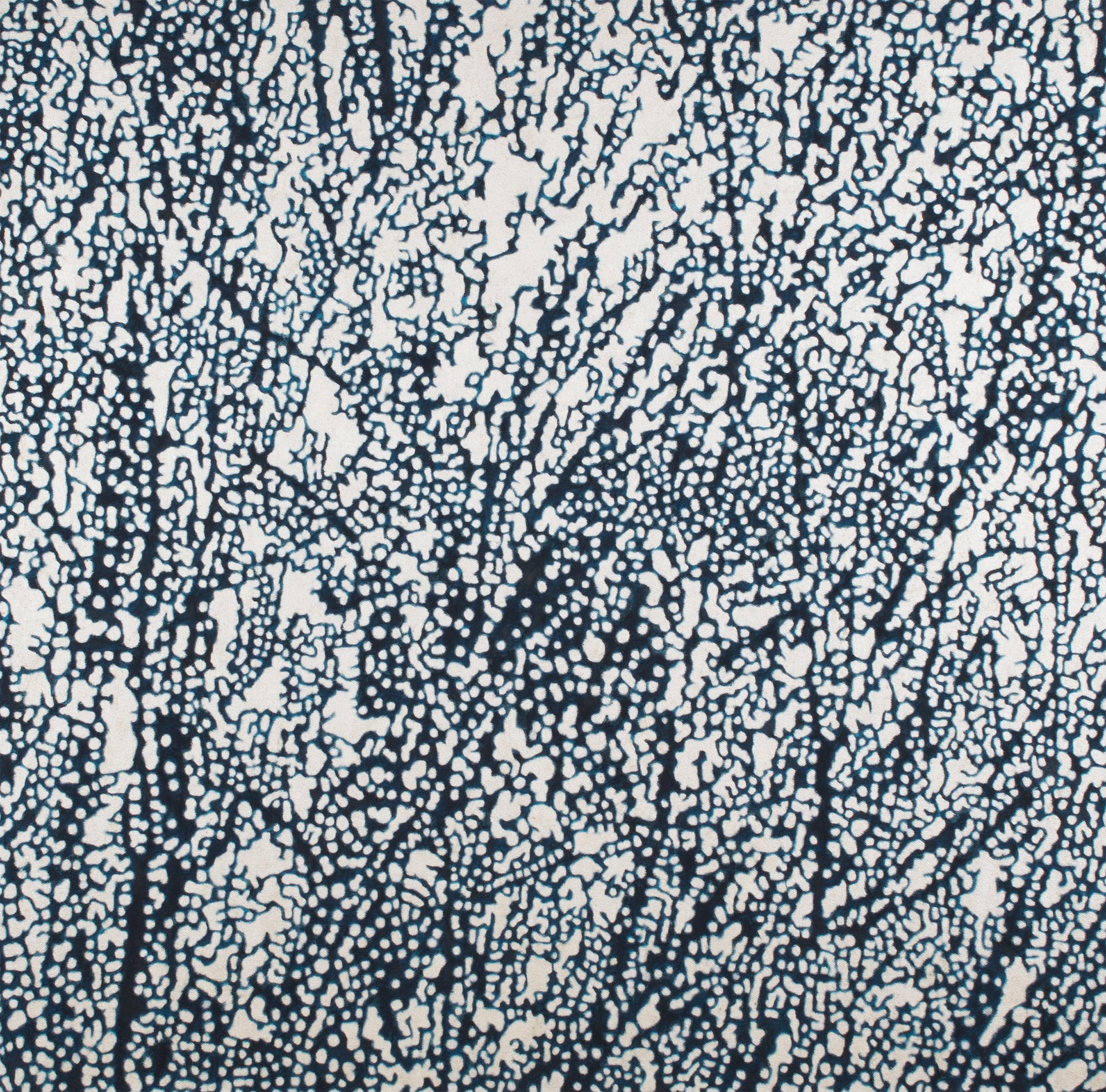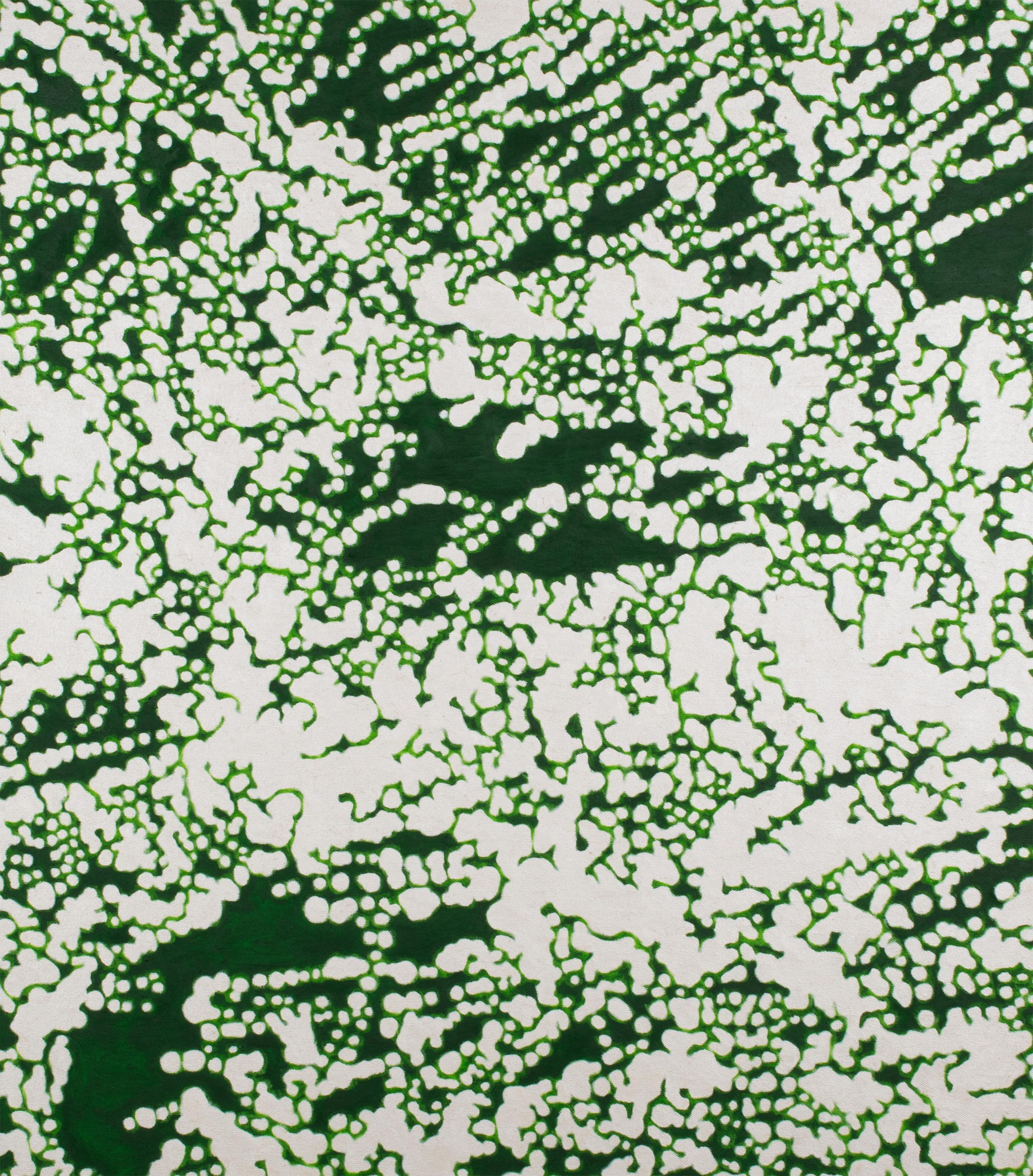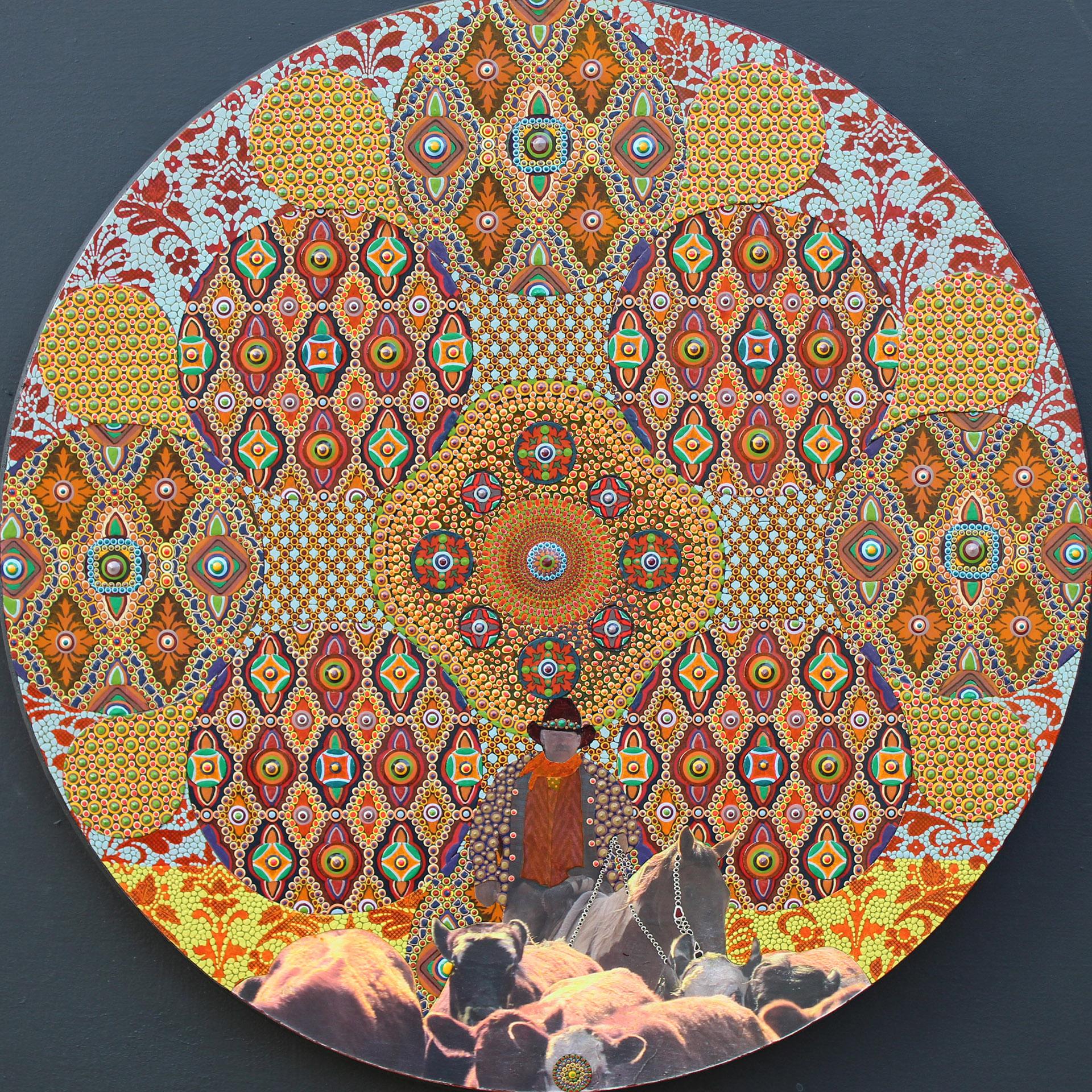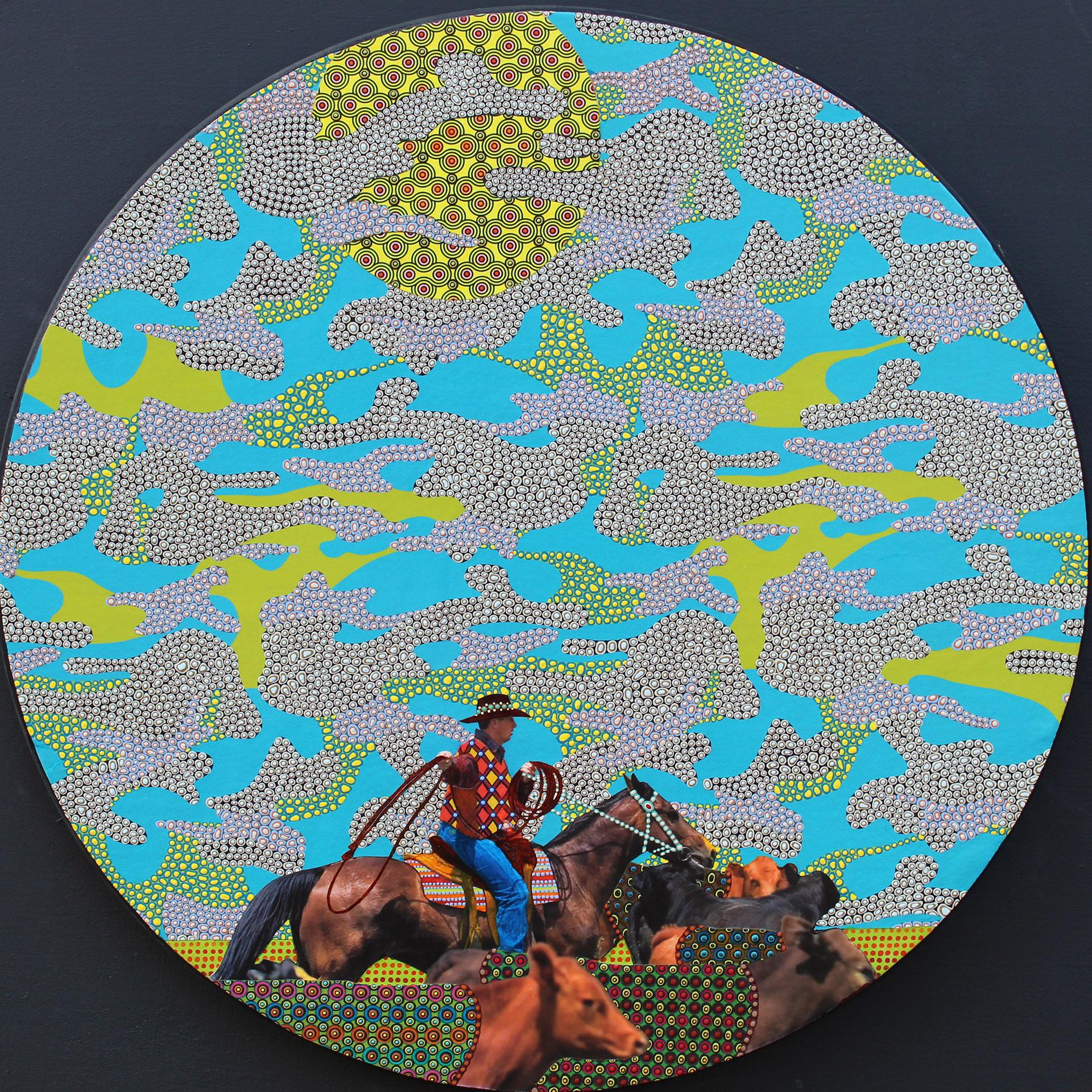Items Similar to Israeli KIbbutz Artist Toddler, Swim Tube Pointilist Oil Painting Bezalel School
Want more images or videos?
Request additional images or videos from the seller
Arie KaplunIsraeli KIbbutz Artist Toddler, Swim Tube Pointilist Oil Painting Bezalel School
About the Item
Belarusian born Israeli artist. lived in germany studied at the Bezalel School.
Bezalel Academy of Arts and Design is Israel's national school of art. Established in 1906 by Jewish painter and sculptor Boris Schatz, Bezalel is Israel's oldest institution of higher education.
The "Bezalel School of Art and Craft" was founded in 1906 by Boris Schatz, who envisaged the creation of a national style of art blending classical Jewish/Middle Eastern and European traditions. The school opened in rented premises on Ethiopia Street. It moved to a complex of buildings constructed in the 1880s surrounded by a crenelated stone wall, owned by a wealthy Arab. In 1907, the property was purchased for Boris Schatz by the Jewish National Fund. Schatz lived on the campus with his wife and children. Bezalel's first class consisted of 30 young art students from Europe who successfully passed the entrance exam. Eliezer Ben Yehuda was hired to teach Hebrew to the students, who hailed from various countries and had no common language.
In addition to traditional sculpture and painting, the school offered workshops that produced decorative art objects in silver, leather, wood, brass, and fabric. Many of the craftsmen were Yemenite Jewish silversmiths who had a long tradition of working in precious metals, as silver- and goldsmithing, which had been traditional Jewish occupations in Yemen. Yemenite immigrants were also frequent subjects of Bezalel artists.
In 1912, Bezalel had one female student, Marousia (Miriam) Nissenholtz, who used the pseudonym Chad Gadya.
Bezalel closed in 1929 in the wake of financial difficulties. After Hitler's rise to power, Bezalel's board of directors asked Josef Budko, who had fled Germany in 1933, to reopen it and serve as its director. The New Bezalel School for Arts and Crafts opened in 1935, attracting many teachers and students from Germany, many of them from the Bauhaus school shut down by the Nazis. Budko recruited Jakob Steinhardt and Mordecai Ardon to teach at the school, and both succeeded him as directors.
In 1958, the first year that the prize was awarded to an organization, Bezalel won the Israel Prize for painting and sculpture.
Bezalel Pavilion near Jaffa Gate
Bezalel pavilion was a tin-plated wooden structure with a crenelated roof and tower built outside Jaffa Gate in 1912. It was a shop and showroom for Bezalel souvenirs. The pavilion was demolished by the British authorities six years later.
Bezalel developed a distinctive style of art, known as the Bezalel school, which portrayed Biblical and Zionist subjects in a style influenced by the European jugendstil (art nouveau) and traditional Persian and Syrian art. The artists blended "varied strands of surroundings, tradition and innovation," in paintings and craft objects that invokes "biblical themes, Islamic design and European traditions," in their effort to "carve out a distinctive style of Jewish art" for the new nation they intended to build in the ancient Jewish homeland.
Leading members of the school were Boris Schatz, Abel Pann, E. M. Lilien, Meir Gur-Aryeh, Zev Raban, Jacob Eisenberg, Jacob Steinhardt, Shmuel Ben David, Samuel Hirszenberg, and Hermann Struck.
- Creator:Arie Kaplun (1909 - 1992, Belarusian, German)
- Dimensions:Height: 32 in (81.28 cm)Width: 26.75 in (67.95 cm)
- Medium:
- Movement & Style:
- Period:
- Condition:
- Gallery Location:Surfside, FL
- Reference Number:1stDibs: LU38213111102
About the Seller
4.9
Platinum Seller
These expertly vetted sellers are 1stDibs' most experienced sellers and are rated highest by our customers.
Established in 1995
1stDibs seller since 2014
1,549 sales on 1stDibs
Typical response time: 1 hour
- ShippingRetrieving quote...Ships From: Surfside, FL
- Return PolicyA return for this item may be initiated within 3 days of delivery.
More From This SellerView All
- Abstract Mixed Media Collage Oil Painting Sports, Leather Baseball MittsBy Patrick LoCiceroLocated in Surfside, FLTitle: (Baseball) Mits 25.5" W x 25.5" H x 2.25" framed; canvas measures 24" W x 24" H. Provenance: The Rails Collection, Washington, DC (with their label verso) This depicts floating baseball gloves inn an abstract pattern. This is not signed on the front and might be signed verso. We have not examined out of frame. Patrick LoCicero was born in Youngstown, Ohio, in 1959. He attended Youngstown State University, Ohio, and the Columbus College of Art and Design. He completed a B.F.A. at Ohio State University in 1982 and an M.F.A. at the San Francisco Art Institute in 1986. His paintings, installations, prints, and multimedia work have been shown in California, Pennsylvania, and Ohio. LoCicero's richly layered imagery is characterized by unusual juxtapositions of everyday objects and classical motifs, which play with the viewer's perception of materials and subjects. LoCicero’s assemblage paintings combine collage with painting. The overlap and collage elements relate directly to the images he depicts, guiding him in his choice of subjects, and come from a variety of sources including the Kama Sutra, antique children’s books...Category
21st Century and Contemporary Contemporary Abstract Paintings
MaterialsCanvas, Mixed Media, Oil, Acrylic, Laid Paper
- French Jewish Post Holocaust Abstract Painting Manner of Hundertwasser Art BrutBy Jichak PressburgerLocated in Surfside, FLJichak Pressburger, Painter. b. 1933, Bratislava, Czechoslovakia. A concentration camp survivior. Came to Israel aboard the ship, "The Exodus". 1964 Went to Paris. In 1979 Returned as new immigrant. Education Tel Aviv University, B.A. in art, with Marcel Janco and Isidor Ascheim at Avni art school. Beaux Arts, Paris with Professor Coutaud. Itzchak Pressburger Stays in Paris from 1963 – 1979, Resident of the “Cité des Arts” 1969-1972. Lives and works in Jerusalem since 1979. One-Man Exhibitions 1963 Gallery Dugit, Tel-Aviv 1968 Cultural Center Enkhuizen, Netherlands 1968 Gallery Zunini, Paris (chosen by the art critic of « Opus : Jean-Jacques Lévèque) 1970 Gallery Zunini, Paris 1973 Gallery Maitre Albert, Paris. Cultural Center Verfeil sur Seye, France 1974 Gallery Maitre Albert, Paris 1976 Gallery Mundo, Barcelone 1980 Artists’ House, Jerusalem 1981 Gallery Alain Gerard, Paris Group Exhibitions 1966 Rathaus Charlottenburg, Berlin. (The first show of Israeli painters in Germany Artists Center of Silvarouvres, Nantes, Ffance XXXth Salon of Finances at “l’Hotel des Monnaies”, Paris 1969 Maison de Culture, Le Havre, France 1968 Gallery Zunini, Paris (chosen by the art critic of « Opus : Jean-Jacques Lévèque) Salon « Grands et Jeunes d’Aujourd’hui », Paris Museum of Fine Arts, Nantes, France Cultural Center Vitry, France Gallery Il Giorno, Milan Cité des Arts, Paris 1972 Salon “Grands et Jeunes d’Aujourd’hui”, Paris Salon de Mai, Paris 1973 Städtische Galerie, Siegen, Germany 1974 Jewish Cultural Center, Paris Publicis, Paris 1975 Réalitiés Nouvelles, Paris 1976 Salon de Mai, Paris 1977 “Perspectives Israeliennes”, Grand Palais, Paris 1981 Salon Alain Gerard, Paris 1984 Artists’ House, Jerusalem Publication 1990 Haggadah Yom Kippour (Hebrew/French) Abraham Bliah (private edition), Paris Acquisitions 1968 The City of Paris 1972 The State of France The Yitzchak Pressburger artist was born in Bratislava – known for centuries by its German name of Pressburg – but the outbreak of World War II found him and his family in Prague. His father realized they had to escape from the Nazi occupiers and tried to get the family across the border into Hungary. However, they were caught near the crossing point, arrested and incarcerated overnight at the nearby railway station. The Czechs put them on a train to Hungary early the next morning. That was their first miracle in their quest for survival. They survived with relative ease until late 1943, when the father was taken away to a forced labor camp. He subsequently died in a death march. Things became even more precarious in early 1944, when the Holocaust made its full-blown presence felt in Hungary. “It wasn’t the Germans, it was the Hungarian Nazis who did the dirty work,” Pressburger points out. The family lived in so-called “safe houses” that were protected by Switzerland, Finland and Sweden. The havens were dismantled in late 1944, and the Pressburgers moved into one of the two Jewish ghettos in Budapest. The Nazis had found two houses with Jews, including the one where we had been, and took them all out and shot them next to the Danube. Today there is a monument by the river [called Shoes on the Danube Bank]. We should have been with the Jews who were killed by the river,” he says. After the war, Pressburger and his siblings were farmed out to various orphanages run by the Jewish Agency, and things took a decidedly better turn. “We finally had food to eat,” he recalls. “After a while we were put on trains that were protected by the Jewish Brigade [of the British Army], and we were sent to Austria, and then to Germany.” “My uncle was a famous artist, and I learned a lot from him,” he says. While in Germany, Pressburger also took some lessons with a local artist. His mother managed to get him and two of his siblings berths on the Exodus, which set sail from Marseilles for Palestine in July 1947. Pressburger was 13 at the time and clearly recalls the aborted attempt to get to the Promised Land. “It was so crowded on the boat. This was a ship that was made to ply rivers in the United States, with a few hundred people on board, and we had over 4,500 passengers crammed in.” As we know, the British prevented the Exodus from docking in Palestine, and the passengers were shipped – in three far more seaworthy vessels – back to France. After the French government refused to cooperate with the British, Pressburger and the others found themselves back in Germany. The teenager eventually made it here in 1948, just one month before the Declaration of Independence. After a short furlough in Tel Aviv, during the first lull in the fighting in the War of Independence, he moved to Kibbutz Kfar Ruppin, where he worked in the cowshed. All the while he continued feverishly drawing and honing his artistic skills, which he says came in handy when he joined the IDF. After completing his military service, which included a spell as one of the founding members of the Flotilla 13 naval commando unit, he worked in Sdom for a while at the Dead Sea Works before starting his formal arts training in earnest. I was in the first group of students at the Avni Institute [in Tel Aviv],” he says. “There was quite a famous bunch of students and teachers like Moshe Mokadi and Isidore Ascheim and Aaron Giladi.” In such illustrious company, one might have thought Pressburger was set to unleash his burgeoning talents on art connoisseurs across the globe, but it was a while before that happened. Pressburger arrived in the French capital in 1964 and spent close to 15 years there, with a short interlude in Germany, before returning to Israel. His time in Paris was a professionally rewarding period of his life, and he also found love. “[Avni Institute teacher] Yochanan Simon gave me the name and address of a French-Israeli family in Paris, but when I got to the house, a young woman opened the door and told me the family was on vacation in Israel,” he explains. Despite missing his expected hosts’ welcome, he and the German-born young lady who greeted him soon fell for each other, and romance quickly led to wedding bells. By all accounts, Pressburger did well in Europe. He secured a rare three-year berth at Cité Internationale des Arts, where artists are normally provided with accommodation and studio space for between two months and a year. He was also accepted to the prestigious Beaux Arts academy of fine arts, mounted solo exhibitions, and took part in group shows all over Europe. One of these last was a group exhibition at Rathaus Charlottenburg in Berlin in 1966 – the first exhibition of Israeli artists in Germany after the Holocaust. When he arrived in Berlin, the lineup for the Israeli show was already signed and sealed, but somehow his work came to the attention of the German culture minister, who arranged for him to join. The Pressburgers’ year-long sojourn came to an abrupt end following an encounter he had one day while walking through the crowded Berlin streets...Category
1960s Expressionist Abstract Paintings
MaterialsCanvas, Oil
- Abstract Procession Jewish Wedding Chuppah Oil Painting Modernist JudaicaBy Sabina TeichmanLocated in Surfside, FLGenre: Modern Subject: Abstract Medium: Oil Surface: Canvas Country: United States Sabina Teichman: (1905-1983) Studied at Columbia Univ. (BA, MA), also with Charles J. Martin and A...Category
1950s American Modern Figurative Paintings
MaterialsCanvas, Oil
- Judaica Modernist Oil Painting 'Know Thyself' Israeli Kibbutz Pioneer, ProphetBy Mortimer BorneLocated in Surfside, FLMortimer Borne, Printmaker, painter, sculptor, and educator was born in Rypin, Poland in 1902 and emigrated to the US in 1916. He studied at the National Academy of Design, The Art Students League, The Beaux-Arts Institute of Design, and with Charles Webster Hawthorne, founder of the Cape Cod School of Art in Provincetown. Painted in a thick impasto style similar in technique to Samuel Rothbort and David Burliuk. Borne himself taught at The New School for Social Research in New York City from 1945-1967. From the 1920s through the 40s he was a prolific producer of New York City cityscapes and genre scenes. In later decades, he adopted a more modernist style apparently influenced by Picasso, producing color drypoints of abstracted figures. His works were widely exhibited in museums in the U.S. and abroad from 1931 and later, including the Art Institute of Chicago, the American Institute of Graphic Arts, Museum of Modern Art, Metropolitan Museum of Art, Corcoran Gallery of Art, New York Public Library, Carnegie Institute, and Royal Society of Painters, Etchers and Engravers in London. He taught at The New School for Social Research in New York City from 1945-1967, and at the Tappan Zee...Category
1970s Modern Figurative Paintings
MaterialsCanvas, Oil
- Polish French Ecole de Paris Mid Century Modernist Oil Painting Clown JugglerBy Abram KrolLocated in Surfside, FLAbram Abraham Krol was born January 22, 1919, in Pabianice (Lodz), Poland. Abram Krol went to France in 1938 to study civil engineering at the Universit...Category
1950s Modern Figurative Paintings
MaterialsCanvas, Oil
- Pop Art Painting Dennis Hollingsworth LA Spanish Artist Post Modernist AbstractBy Dennis HollingsworthLocated in Surfside, FLDennis Hollingsworth (Spanish/American, b. 1956), "Lil' Franklin," 1997, Oil on canvas, Hand signed on stretcher bar verso, Gallery label verso (Bennett Roberts Fine Art, Los Angeles, CA) affixed verso, canvas: 45"h x 42"w, overall (with frame): 46"h x 43"w. Dennis Hollingsworth, Born 1956 in Madrid, Spain he has lived and worked in Los Angeles, California. He currently lives and works in New York City and Tossa De Mar...Category
1990s Pop Art Abstract Paintings
MaterialsCanvas, Oil
You May Also Like
- "The Collector" Surreal Abstract Geometric Pointillist Oil PaintingBy Ron HooverLocated in Houston, TXRon Hoover surrealist painting titled "The Collector" done in a pointillism style in 1987. This work was exhibited at the Palm Spring Desert Museum in 1990. Signed and dated by artis...Category
1980s Pointillist Figurative Paintings
MaterialsCanvas, Oil
- "Winter, " Acrylic Paint on Canvas, 2012Located in Chicago, ILIn this exquisite painting, artist Ren Hui celebrates the beauty of nature using a style that he calls “uncomplicated and honest.” Entitled "Winter," this patterned composition was c...Category
21st Century and Contemporary Pointillist Abstract Paintings
MaterialsCanvas, Acrylic
- "Wild Wood, " Acrylic on Canvas, 2012Located in Chicago, ILIn this exquisite painting, Ren Hui celebrates the beauty of nature using a style that he calls “uncomplicated and honest.” Entitled "Wild Wood," this beautifully patterned composition was created using a method of modern pointillism, creating three-dimensional space within a two-dimensional canvas. Embracing the disorderly balance of the forest, the artist attempts to convey the complexities of the natural world by rendering the bough of an evergreen tree...Category
21st Century and Contemporary Pointillist Abstract Paintings
MaterialsCanvas, Acrylic
- Meaning & Nothingness #3By Casey VogtLocated in Denver, COBy placing figures into fantastical landscapes, I allow the viewer a glimpse into what might be reality, or not. This practice allows me to push the boundaries of what a past/present...Category
2010s Pointillist Abstract Paintings
MaterialsHouse Paint, Panel, Archival Paper
- Meaning & Nothingness #8By Casey VogtLocated in Denver, COBy placing figures into fantastical landscapes, I allow the viewer a glimpse into what might be reality, or not. This practice allows me to push the boundaries of what a past/present...Category
2010s Pointillist Abstract Paintings
MaterialsHouse Paint, Panel, Archival Paper
- Meaning & Nothingness #9By Casey VogtLocated in Denver, COBy placing figures into fantastical landscapes, I allow the viewer a glimpse into what might be reality, or not. This practice allows me to push the boundaries of what a past/present...Category
2010s Pointillist Abstract Paintings
MaterialsHouse Paint, Panel, Archival Paper
Recently Viewed
View AllMore Ways To Browse
Vintage Paint Tubes
Yemeni Silver
Yemen Silver
A Hitler
Fiddle Art
Pierre Boulanger
18th Century Figural Painting
Gym Painting
The Lobster Fisherman
Thorgrimur Einarsson
Victoria Makinde
19th Century Indian Religious Painting
America Martin Boxer
Bassano Jacopo
Frank Fleming Sculpture
Howard Rogers
Jane Waterous Art
Jean Baptiste Pater



